Both one of the prettiest and best-preserved cities in Vietnam, Hoi An is located along its central coast, not too far south of nearby Da Nang. Although most known for its attractive Old Town that is home to hundreds of historic buildings, it also has a fantastic food scene, brilliant beaches and some great day trip destinations.
Set alongside the Thu Bon River with canals also leading to the East Vietnam Sea, the city thrived for centuries as one of the most important trading ports in Southeast Asia. As such, a diverse range of cultural influences are on display. Chinese temples and French colonial buildings lying next to ornate Japanese bridges and old Vietnamese family homes.
Aside from enjoying its lovely ambience and tourist attractions, and eating everything you possibly can, other things to do in Hoi An can be found in the scenic countryside and the alluring Cham Islands nearby.
In this post, we'll cover:
17. Quan Cong Temple
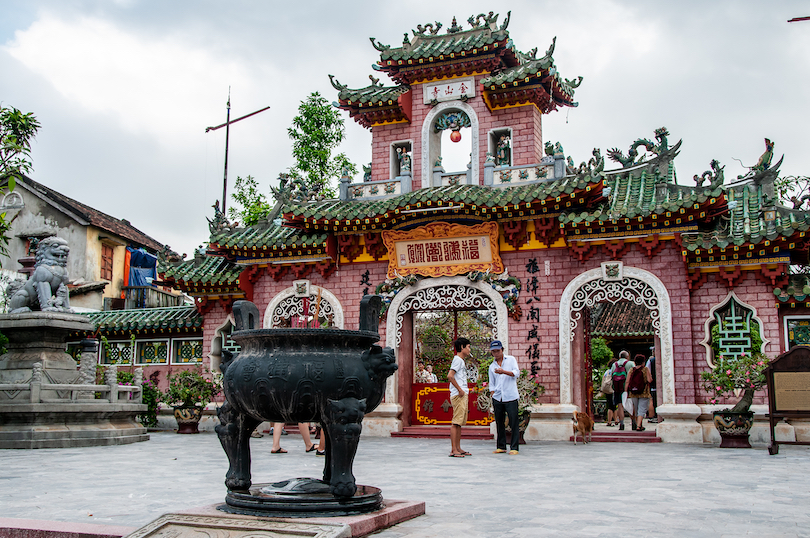
One of the city’s most important places of worship, the colourful Quan Cong Temple lies right in the heart of Hoi An’s atmospheric Old Town. Known for its incredible art and architecture, it has an elaborate facade, fine frescos and plenty of other classical Chinese features to check out.
Built back in 1653, the well-preserved temple is dedicated to Quan Van Truong – a famous Chinese general who was known for his loyalty, integrity, sincerity and sense of justice. These qualities were of huge importance, as the coastal city had a thriving port and merchants needed to trust one another.
Once past its bright red, yellow and green entrance gate, you can explore the grounds full of statues and pay your respects in the sacred site’s incense-infused interior. As well as snapping photos of its delightful dragon motifs and majestic main altar, guests can also see a superb old statue of the revered general himself.
16. Thanh Ha Pottery Village
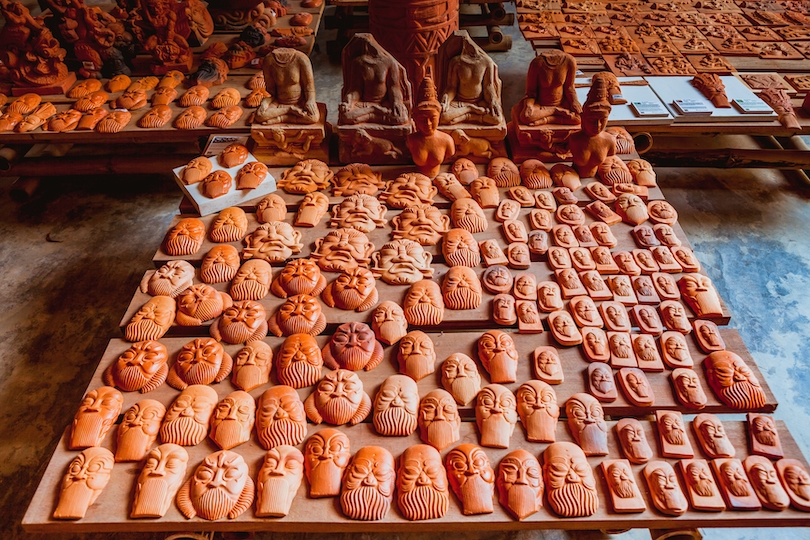
One of the oldest pottery villages in Vietnam, the traditional Thanh Ha can be found just fifteen minutes drive down the Thu Bon River from the city center. Here you can watch master craftsmen at work and pick up some beautiful pots, statues and other ceramic products to remind you of your time traveling around the country.
Still home to dozens of pottery workshops and small, family-run ceramics businesses, the quiet little village was formed sometime in the sixteenth century. As you wander about its charming old streets, you can see talented artists fire up their kilns and create amazing artworks using ancient techniques.
Besides admiring the impressive potters as they shape the clay and conjure up lovely creations, you can also have a go yourself as classes regularly take place. Afterwards, make sure to stop by the Thanh Ha Terracotta Park for interesting exhibits on the art form and remarkable replicas of the Arc du Triomphe and Colosseum, among other famous landmarks.
15. Take a Vietnamese Cooking Class
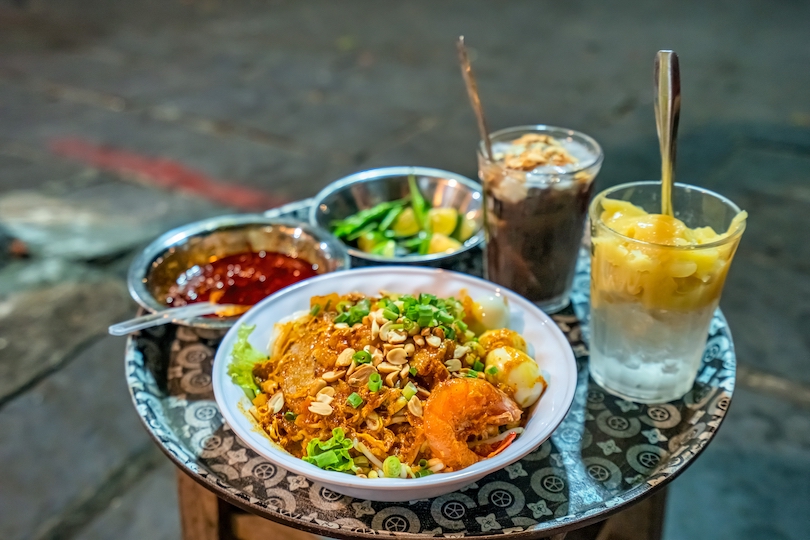
After having tasted so many delicious dishes during your time in Vietnam, why not take a cooking class so you can replicate your favorite pho and fresh spring rolls when you get home? In Hoi An, countless restaurants and cooking schools run fun classes that usually also include a trip around the local markets to source ingredients.
As you peruse all the market stalls laden with fresh vegetables and fragrant herbs, your friendly teacher will explain a bit about the history and culture of cooking in the country. Back at the culinary school or kitchen, they’ll then teach you how to prepare the food and make tasty treats like spicy mango salad, crispy banh xeo and sweet and sour fish soup.
As this is one of the most popular things to do in Hoi An there are many cooking school with Gioan, Red Bridge and the Kumquat BBQ Restaurant among the most popular. All of which put on unforgettable experiences that see you master Vietnamese classics in no time at all.
14. Tra Que Vegetable Village
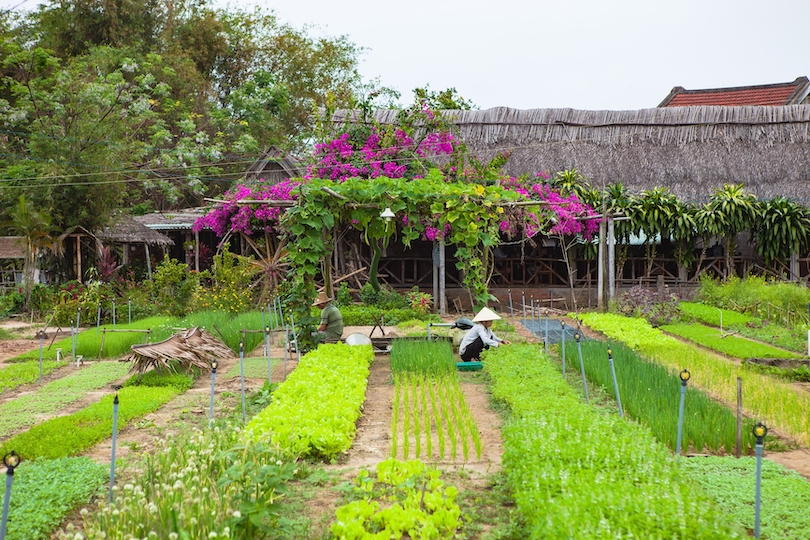
Fervent foodies can go one step further and tour the tranquil Tra Que Vegetable Village which lies just to the north of town on the way to An Bang Beach. A peaceful and picturesque spot, its fertile farms and fields are famed for their fresh veggies that are used in Hoi An and the surrounding region.
Named after the sweet-scented vegetables that are used every day to spice up locals’ dishes, the small village has rows and rows of gorgeous green vegetable patches for you to amble around. In addition to taking scenic shots of the crops stretching endlessly into the distance, you can also watch the farmers prepare the soil, plant seeds and harvest their produce.
Visitors can even help sow vegetables themselves and sample some with both cooking classes and guided tours available at the laidback village.
13. Old House of Phun Hung
The home of Phun Hung is two stories, and was built in the 18th century. More than eight generations of the same family have lived in the Old House of Phun Hung since then.
What makes this house truly unique, however, is the fact that it is more than just a museum: It is still a home, and the tour guide today is part of that eighth generation. Follow Ms. Anh around as she shows you her family home, and be on the lookout for the details that make the home unique.
You’ll see carved Chinese beam supports, trap doors and a distinct Japanese influence in both architecture and decor.
12. Trip to Cham Islands
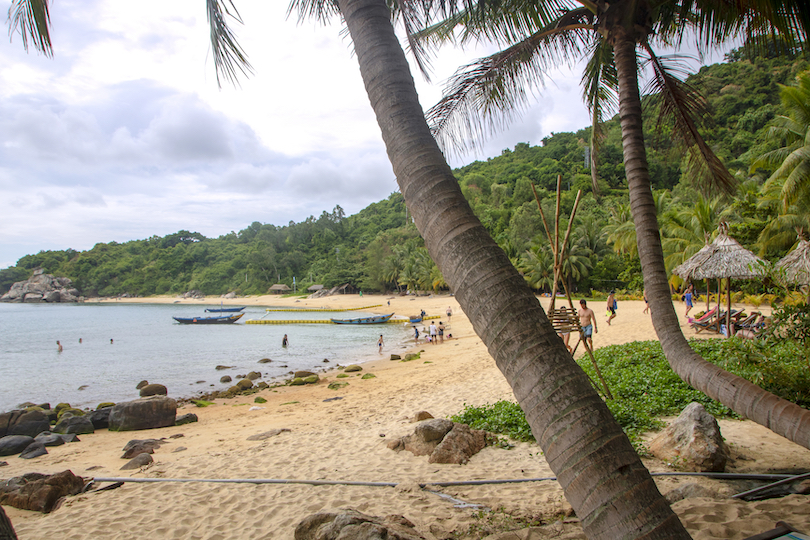
Not to be missed when in town, are the idyllic Cham Islands that lie just nine nautical miles offshore from An Bang Beach. Easily reached in half an hour by ferry or speed boat, the eight untouched isles have superb sunbathing, swimming, snorkeling and scuba diving to enjoy.
Now protected as part of a nature reserve and marine park, the mountainous archipelago is mostly uninhabited with only the largest island, Hon Lao, housing a couple of quaint fishermen’s villages. Aside from enjoying sightseeing cruises along their secluded shores, you can also stay overnight in guest houses to gain a greater understanding of local life.
The most fun things to do here, however, is undoubtedly enjoying the archipelago’s breathtaking beaches and snorkeling in the teeming coral reefs.
11. Take a Bike Tour

A wonderful way to see more of the city and its scenic surroundings is to take a bike tour around its charming center and the bucolic countryside just outside. From the Old Town, numerous companies rent out bikes and motorbikes with some also offering leisurely cycling tours to the area’s traditional temples, villages and nature spots.
As you slowly peddle along, you’ll pass pretty paddy fields, reflective rivers and rural villages with frequent stops planned all along the way. These often take you off-the-beaten-path and along rickety bamboo bridges to little local artisans’ workshops and isolated islands along the river delta.
At each stop, your guide will provide more information on the region’s rich history and culture with many tours also including tasty lunches, too. Amongst the most popular excursions are those run by Heaven and Earth and Hoi An Cycle Tours.
10. Trip to Mỹ Sơn
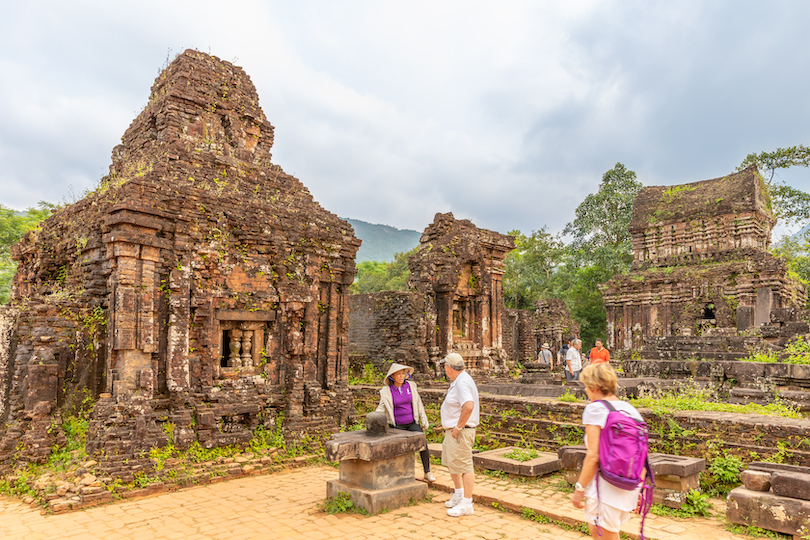
Another memorable trip you can make when visiting Hoi An is to the impressive and extensive archaeological ruins of Mỹ Sơn. The sprawling site is an hour’s drive southwest of the center with crumbling old religious buildings and ornate carvings on show.
One of the longest inhabited archaeological sites in Southeast Asia, the collection of Hindu temples was erected between the fourth and fourteenth centuries by the Kings of Champa. Often compared to other complexes like Angkor Wat in Cambodia and Bagan in Myanmar, the wide valley in which it lies encompasses around seventy temples and tombs.
Wandering around is an awe-inspiring experience. Intricately carved inscriptions and statues peek out from beneath the undergrowth that threatens to engulf the ancient edifices. While some temples are still in good condition, much of the site sadly suffered a lot of damage during the American War.
9. Central Market
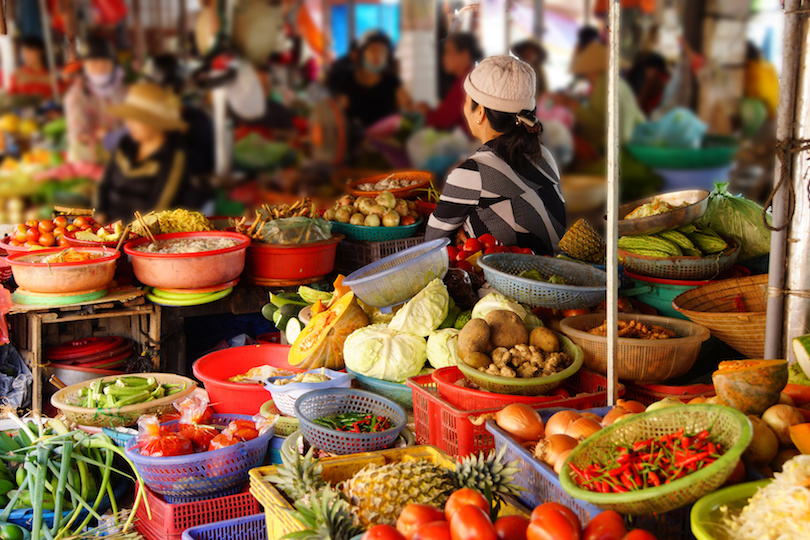
Back in the center of the city is another of Hoi An’s top tourist attractions: the colourful and chaotic Central Market. A firm favorite with foodies, it has dozens of stands and stalls for you to peruse that seemingly sell everything under the sun.
Lying right in the heart of the Old Town alongside the Thu Bon River, the lively waterfront area has served as an important center of trade since at least the sixteenth century. Humming with life at any time of day, its vendors hawk everything from fine jewellery and local handicrafts to shoes, bags, toys and textiles.
At its food court, you can sample some delicious local dishes or stop for a snack before continuing shopping for souvenirs. Thanks to its friendly, fun and welcoming atmosphere, the market really is a must-visit when in town.
8. An Bang Beach
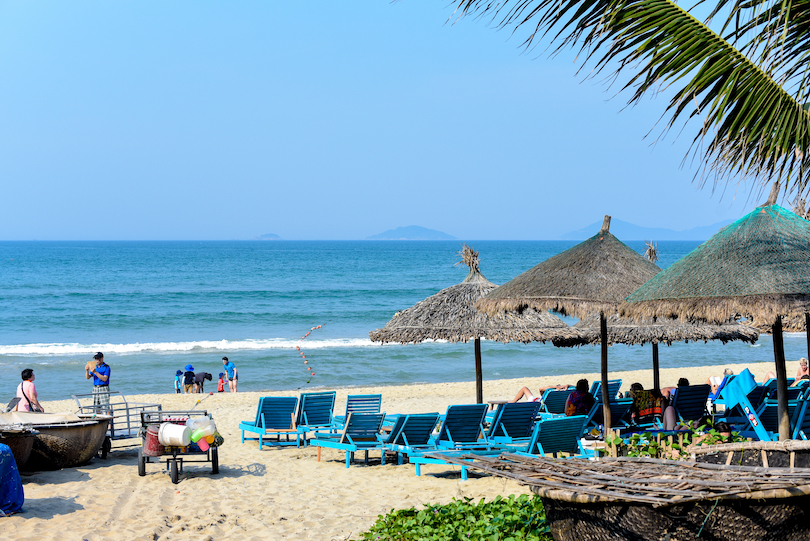
One of the busiest beaches in all of Vietnam is Hoi An’s An Bang Beach. If after all the sightseeing and strenuous outdoor activities you want to kick back, relax and soak up some sun, then An Bang Beach is definitely the place to go. Located ten minutes drive north of the center, its pristine white sands are lined by deckchairs and palapas with cafes and restaurants also dotted here and there.
Facing the shimmering East Vietnam Sea and far off Cham Islands, sweeping sands stretch more than four kilometers in total. Due to recent erosion at the neighboring Cua Dai, it is an increasingly popular place to head with countless hotels, guest houses and eateries having sprung up over the last few years.
Countless vendors are lined up under the shade of the palm trees to feed hungry beachgoers throughout the day.
7. Old House of Tan Ky
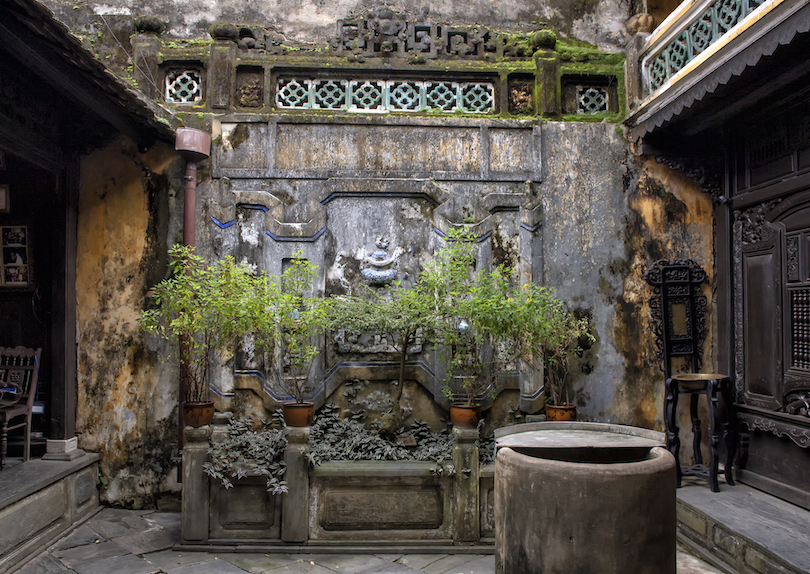
Another of the unusual attractions in Hoi An that straddles the line between residence and museum is the the Old House of Tan Ky. The home is more than 200 years old, and it has passed through the hands of seven generations within the same Vietnamese family.
The home is architecturally interesting, and on a visit you can admire details like the pulleys that raise furniture to avoid flooding or the stunning carved wooden balcony. Family members still reside in the Old House of Tan Ky, which brings the history of the property to life in a fascinating way.
6. Cantonese Assembly Hall
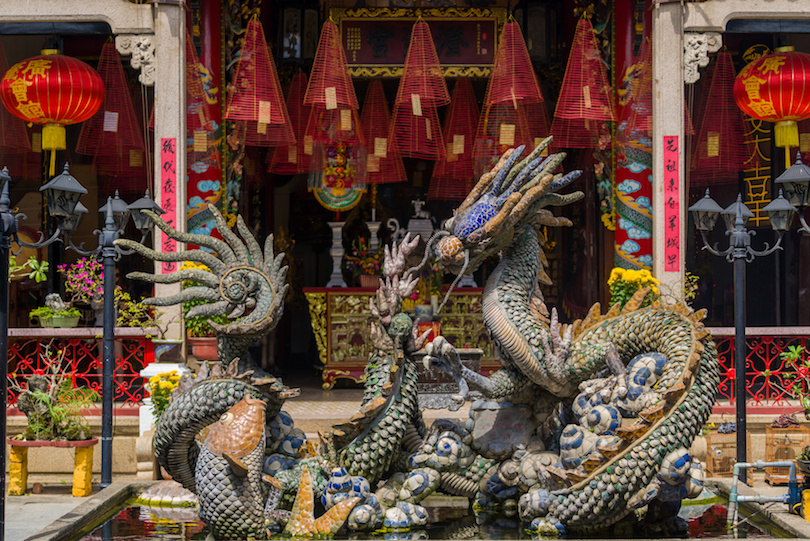
One of the most popular attractions in Hot An is the Cantonese Assembly Hall. Also known as the Quang Trieu, the assembly hall sits right next to the Cau Pagoda. As the name suggests, the assembly hall was constructed by Cantonese settlers during the 19th century.
Dedicated to the Thien Hau Holy Mother, the Cantonese Assembly Hall was a gathering place for worship and communication among Chinese visitors and residents. On a tour of the Cantonese Assembly Hall, you can admire the structure as well as the decor, which includes a striking dragon made from pottery.
5. Get a Tailormade suit
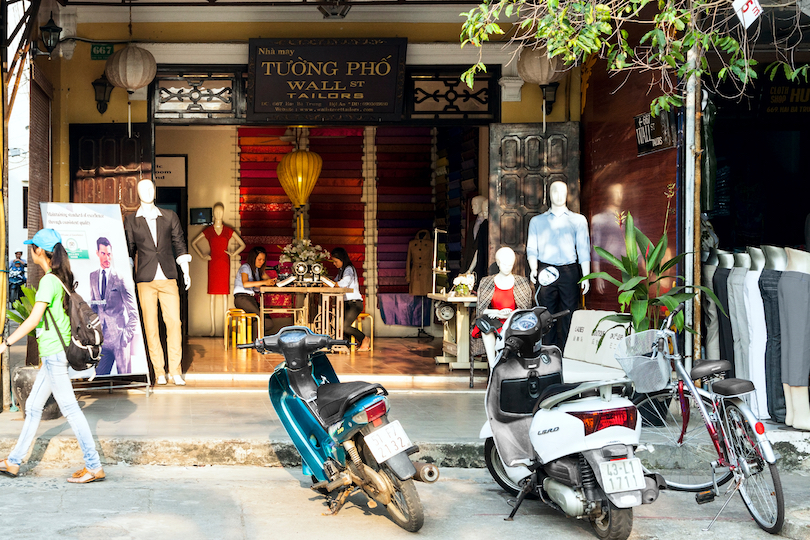
Hoi An is filled with tailors, a tradition resulting from its past as a trading port on the silk route. Subsequently, getting something tailor made is one of the most popular things to do in Hoi An.
At a true tailor’s shop in Hoi An, you can browse through countless varieties of fabric, choose colors and then get measurements. As soon as the next day, you’ll be able to pick up your complete suit or dress, or you can go back for a second fitting and get the perfect fit. Don’t be afraid to haggle on the deposit, paying only the full amount once the tailoring or garment is complete.
4. Fujian Assembly Hall
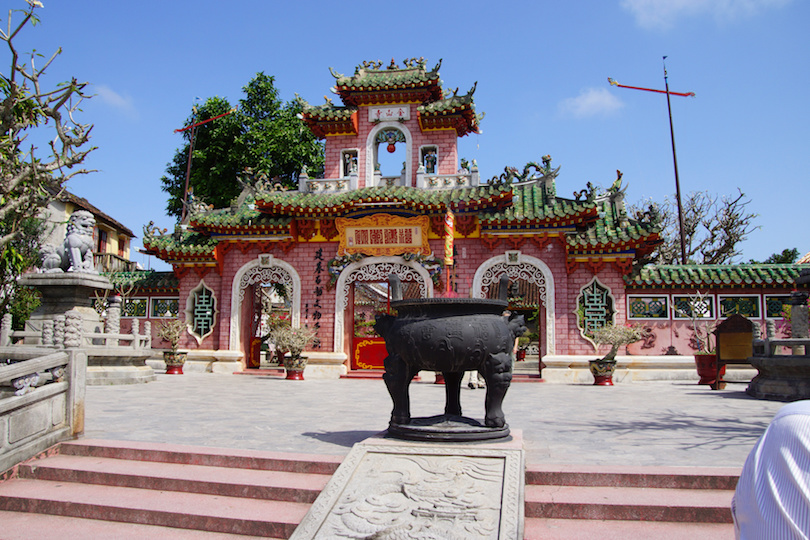
Phuc Kien is the common name for the Fujian Assembly Hall. Like other assembly halls in the city, Phuc Kien served as the gathering place for residents, traders and visitors from a specific area in China called Fujian.
Later, the assembly hall transformed into a religious site to honor the deity Thien Hau. Visiting the Fujian Assembly Hall means being able to spot the colorful fountains in the courtyard, the ornate gates surrounding the property and the beautifully carved dragons in the main room.
The Fujian Assembly Hall is still a popular place among visitors and residents of Fujian origin and ancestry.
3. Hoi An Night Market
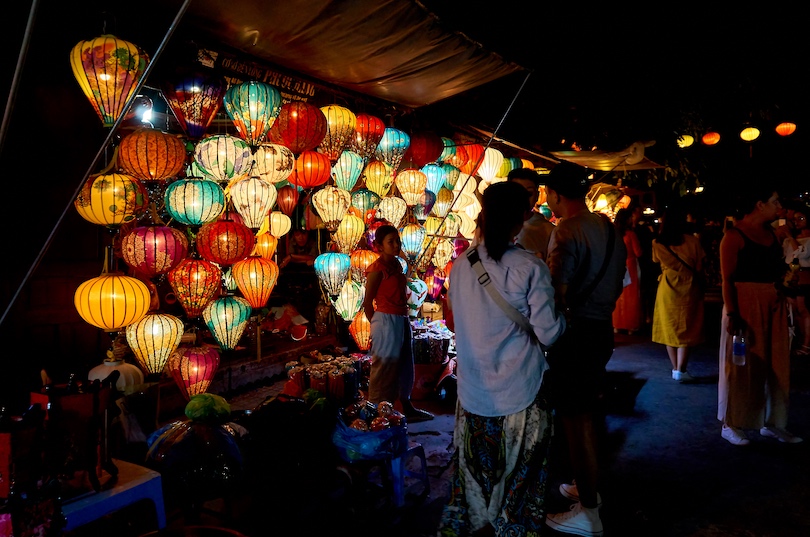
There is no shortage of shopping opportunities in the city, but one of the most interesting is found at the Hoi An Night Market. The market is located on Nguyen Hoang Street, just opposite the Japanese Covered Bridge.
The market opens around five each evening, when more than 500 vendors open up their stalls to sell everything from souvenirs to clothing to fresh food. Perhaps the most-spotted item for sale is the paper lantern, which glows beautifully after nightfall.
You can buy a colorful lantern to cast a glow as you shop, or you can take it home as a way to remember the colors, vibrancy and excitement of the Hoi An Night Market.
2. Japanese Covered Bridge
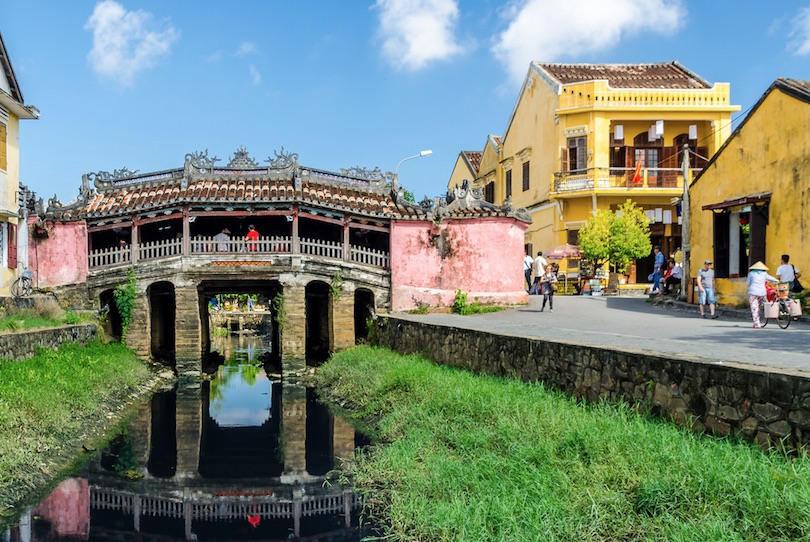
The Japanese Covered Bridge, also known as the Cau Chua Pagoda, is one of the most visited landmarks in the city. The bridge was built in the 17th century to link Tran Phu St with Nguyen Thi Minh Khai St.
This allowed the Japanese quarter of Hoi An to be accessible from the Chinese neighborhoods. The bridge is covered and resembles a Japanese pagoda, and its original style has been carefully preserved for the last 400 years.
The covered bridge has a practical purpose, to shelter those crossing from the elements, but it is also decorative and is covered with ornate carvings depicting animals.
1. Old Town
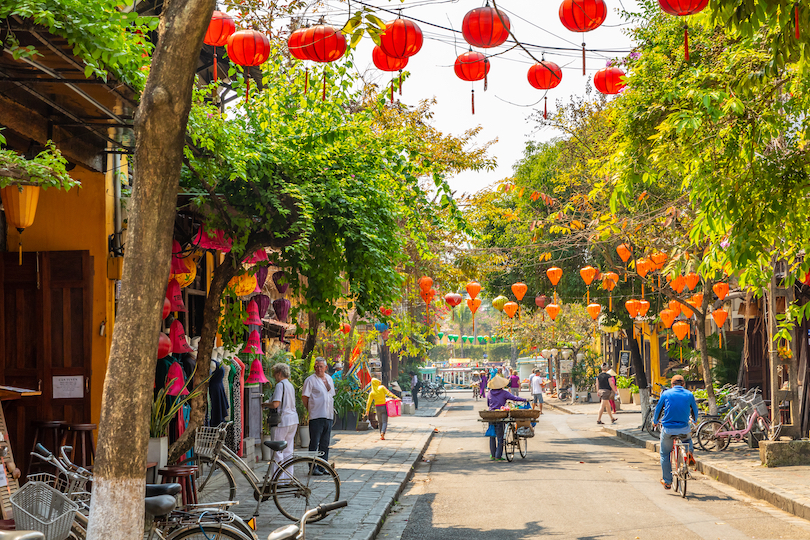
The Old Town of Hoi An is an remarkably well-preserved South-East Asian trading port dating from the 15th to the 19th century. Many of the historic buildings are built in a traditional Chinese style, and the roads are narrow and winding.
Classical music is piped into the Old Town, and a single ticket allows you entrance into the main attractions. Highlights of the Old Town Include the Japanese Covered Bridge, the three so-called Old Houses and the Quan Cong Temple.
There are several museums in the Old Town, but you may want to skip them in favor of watching the incredible folk music performances held several times each day at the Hoi An Handicraft Workshop.
Best Time to Visit Hoi An
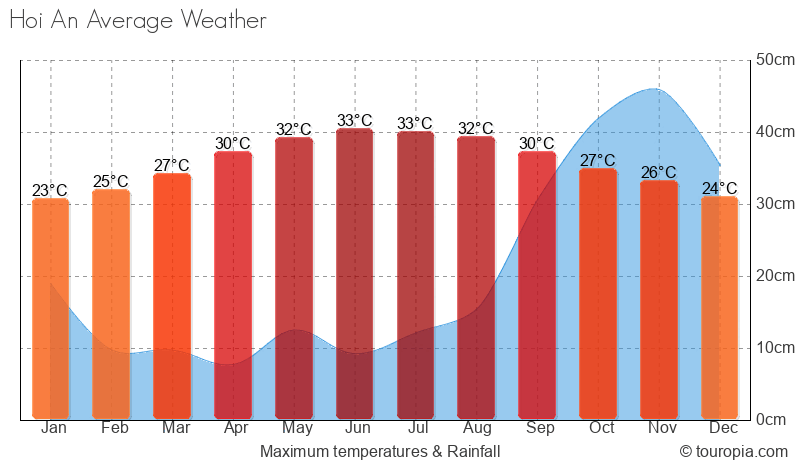
Unlike further north in Vietnam, Hoi An only has two seasons, the rainy and the dry, though temperatures remain hot throughout the year. The most popular months to visit are July, August and December as this is when most Europeans take their holidays.
Due to the almost daily downpours and occasional floods, the low season is from September through January. December is an expectation though as most of its rain falls across just five days. As the cooler temperatures of 25 to 31°C (77 to 88°F) are perfect for sightseeing, its old town is packed with prices higher as a result.
As the temperatures and humidity are relatively low, February, March and April also see lots of visitors. Numerous important and exciting events like Vietnamese New Year and the Lady Thien Hau Procession also take place then.
While May and June are very quiet due to the high temperatures, July and August are again among the busiest and most expensive of the year. While it rains a little most days, you can still sunbathe at its nearby beaches or attend its Mid-Autumn Festival.
The 14th day of each lunar month also sees the magical Hoi An Lantern Festival light up its river and old town – an absolute must when in town.
Map of Tourist Attractions in Hoi An
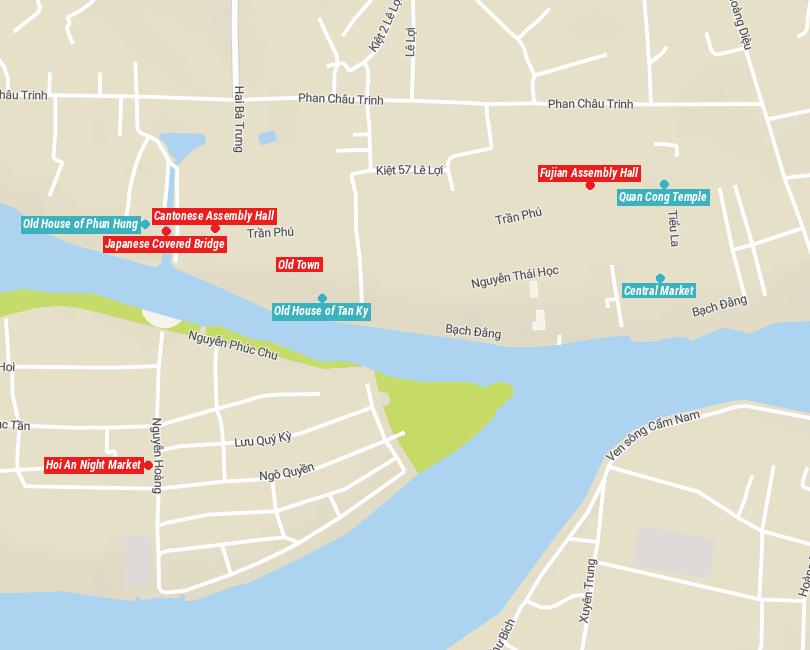 © OpenStreetMap © MapTiler © Touropia
© OpenStreetMap © MapTiler © Touropia
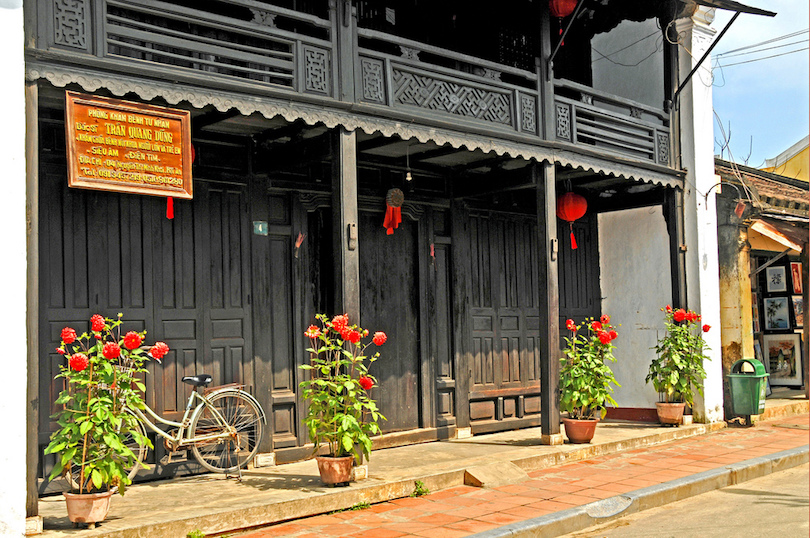
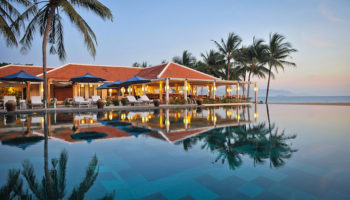
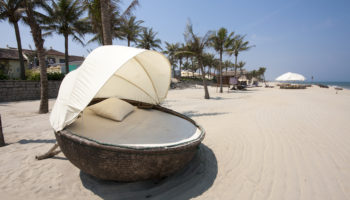
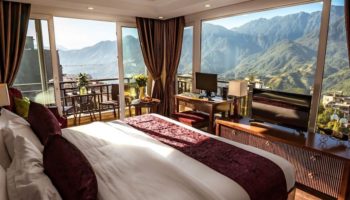
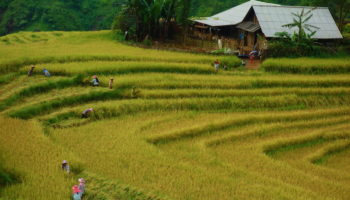

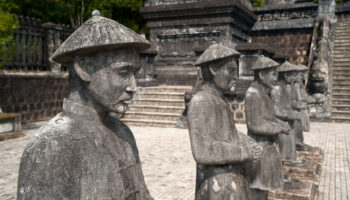
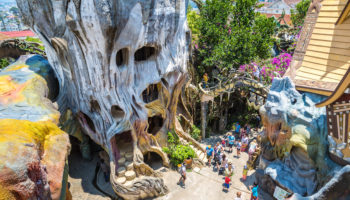
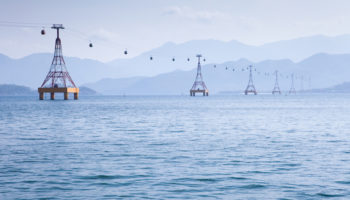

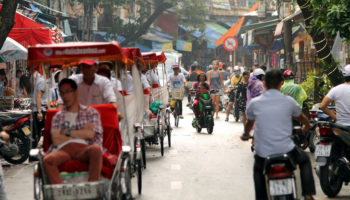
For me, Hoi An is the most beautiful place in Vietnam. Everyone should spend at least three days in it to get to know the different faces of this amazing city 🙂